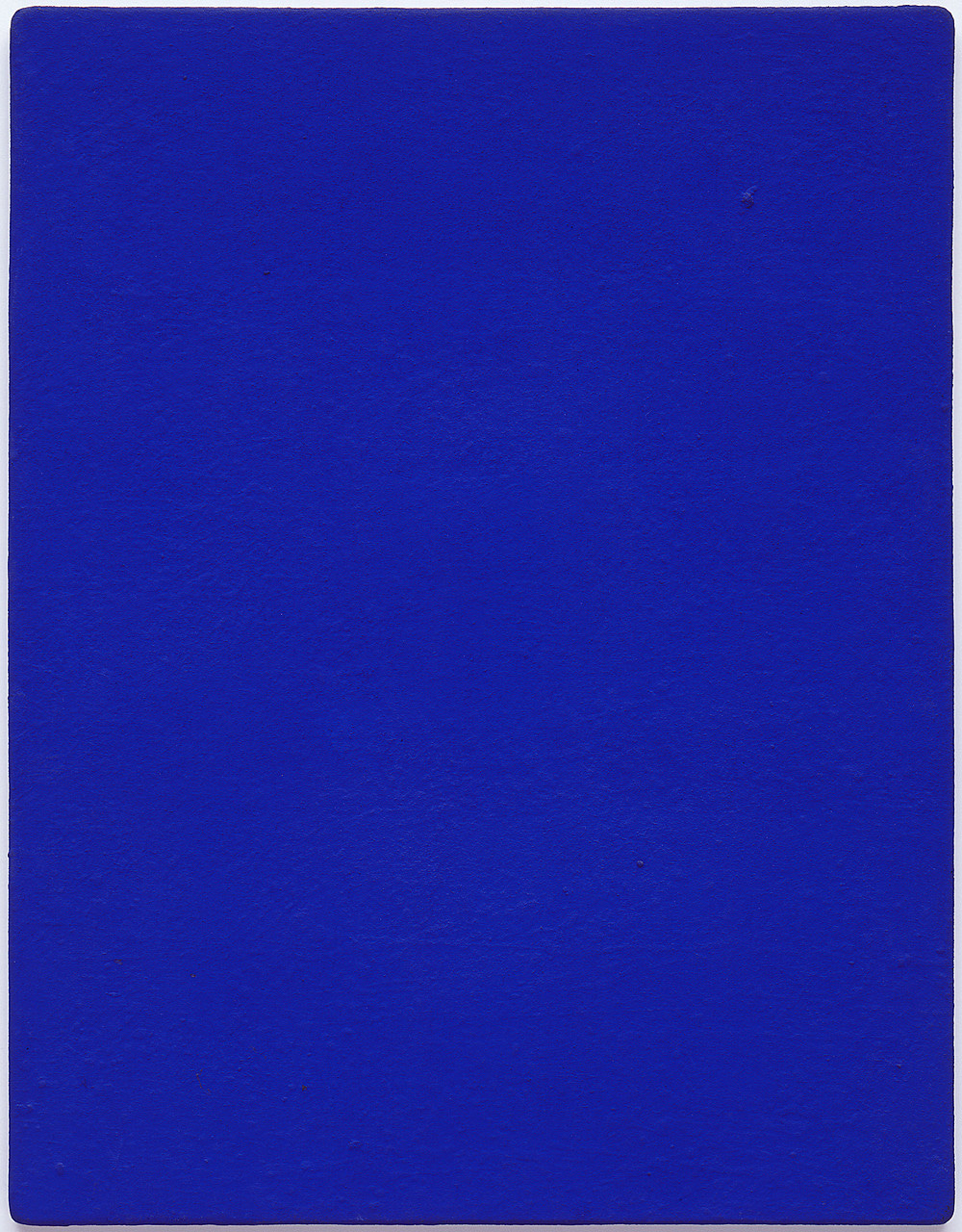
Standing before Yves Klein's (1928-1962) work "Untitled Blue Monochrome (IKB 82)" at the Guggenheim Museum, visitors often experience something unexpected. The slightly larger-than-one-meter canvas appears deceptively simple – a flat blue color and nothing more. Yet this seemingly minimal work represents one of the 20th century's artistic breakthroughs, embodying Yves Klein's lifelong obsession with pure color.
The Birth of Blue
The story behind Klein's revolutionary blue reads like an alchemical fairy tale. In 1955, the French artist embarked on his destiny: to create a blue so pure and saturated that it would appear to vibrate with spiritual energy. Working with Parisian paint dealer Edouard Adam, Klein tirelessly experimented with pigments and binding agents, frustrated by how traditional mediums dulled the intensity of ultramarine blue.
The breakthrough came through an unexpected collaboration. Klein discovered Rhodopas M, a synthetic resin binder that allowed him to mix pure ultramarine pigment without compromising its chromatic intensity. Unlike conventional oil or acrylic mediums, which inevitably muted colors, this new mixture preserved the pigment's power while maintaining the paint's usability.
The result was International Klein Blue (IKB), a distinctive color for which Klein patented the formula in 1960. In Klein's words, this wasn't simply a new shade of blue; it was "the most perfect expression of blue." The color appeared to pulsate with inner light, creating an optical phenomenon that made the surface simultaneously advance and recede, capturing what Klein called "the void."
More Than Monochrome: A Spiritual Revolution

Klein's blue monochromes weren't minimalist exercises – they were spiritual manifestos. The artist, deeply influenced by Eastern mysticism, viewed IKB as a pathway toward the immaterial, a visual representation of infinity. He claimed that blue had no dimensions and was "beyond dimensions, while other colors are not."
The 1959 "Untitled Blue Monochrome (IKB 82)" illustrates this philosophy. Created during Klein's most productive period, the work demonstrates meticulous technique. Rather than simply applying blue paint to canvas, Klein layered multiple coats, creating subtle variations in texture and light. The surface becomes a meditation on pure sensation, inviting viewers to lose themselves in the color’s depths.
Klein's method was revolutionary for its time. While his contemporaries in the late 1950s explored abstract expressionism's emotional gestures or minimalism's industrial aesthetic, Klein pursued something entirely different: the dematerialization of art itself. His monochromes weren't about applying paint to the canvas but about the absence of everything else – removing visual noise to reveal pure, transcendent experience.
To maximize their psychological impact, Klein demanded that his works be exhibited under specific lighting conditions and spatial arrangements. He wanted viewers to feel overwhelmed and spiritually encounter pure blue.
The Legacy of Infinity
Klein died of a heart attack at the very young age of 34, but his brief career fundamentally changed our understanding of what painting could be, and his paintings' influence extends far beyond the art world. Klein Blue has inspired fashion designers, architects, and even scientists studying color perception. This painting demonstrates how a single innovation – in this case, a new method of binding pigment – can transform the art world.




To see his work in person is to re-live the spontaneity and excitement of discovery/un-self conscious creativity of a past time and wish it into the now and for yourself and others.